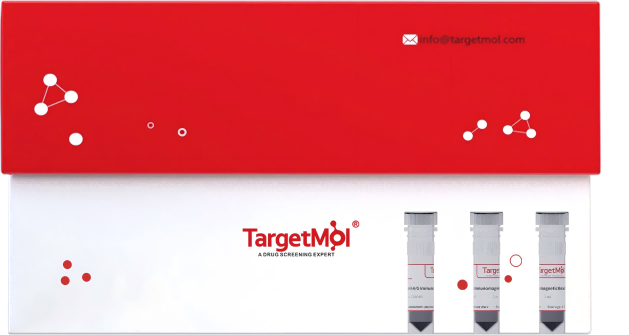 Your shopping cart is currently empty
Your shopping cart is currently empty


Mouse CD3/CD28 T Cell Activation Beads
| Pack Size | Price | USA Warehouse | Global Warehouse | Quantity |
|---|---|---|---|---|
| 200 μL (for 2×10^7 cells) | $101 | 20 days | 20 days | |
| 1 mL (for 1×10^8 cells) | $439 | 20 days | 20 days |
 Related Products
Related Products
1. Mouse Cells
| Spleen | Lymph Nodes | Peripheral Blood | Bone marrow | Tumor tissue | |
|---|---|---|---|---|---|
| CD3+ T Cell | C0061 | C0061 | / | / | / |
| CD4+ Cell | C0062(Preferred), C0067(Optional) | C0062(Preferred), C0067(Optional) | C0067 | / | C0067 |
| CD8+ Cell | C0063(Preferred),C0068(Optional) | C0063(Preferred),C0068(Optional) | C0068 | / | C0068 |
| Neutrophils | C0064 | / | C0064 | C0064 | / |
| CD3+ Cell Depletion | C0152 | C0152 | / | / | / |
| CD3/CD28 T Cell Activation | C0180 | / | / | / | / |
2. Human Cells
| Peripheral Blood | Cord Blood | |
|---|---|---|
| CD3+ T Cell | C0065 | / |
| CD34+ Cell Enrichment | C0066 | C0066 |
| CD4+ T Cell | C0148 | / |
| CD8+ T Cell | C0149 | / |
| CD3/CD28 T Cell Activation | C0150 | / |
| CD66b+ Cell | C0151 | / |
 Product Inforamtion
Product Inforamtion
| Mouse CD3/CD28 T Cell Activation Beads | Features |
|---|---|
| Concentration | 1×10^8 beads/mL |
| Solution | PBS pH 7.4 (0.1% BSA, 0.1% proclin-300) |
 Features
Features
1.High Efficiency: Rapidly activates and expands T cells without the need for antigen-presenting cells or antigens.
2.High Viability: Beads are non-cytotoxic, ensuring T cells maintain strong vitality and functionality.
3.Easy to Use: Enables target cell separation with a magnetic stand.
 Application
Application
1.Intended for activation of mouse T cells, e.g. CD3+ T cells, CD4+ T cells, or CD8+ T cells.
2.The activated T cells can be analyzed shortly after activation (for trans-fection/transduction or to study T cell receptor signaling, proteomics, or gene expression). T cells can be left in culture to differentiate into T helper cell subsets, T cell proliferation or expansion of polyclonal T cells.
 Prepare Reagents
Prepare Reagents
1.Washing buffer: Use PBS containing 2 mM EDTA and 2% fetal bovine serum (FBS), or PBS containing 2 mM EDTA and 0.5% BSA. Sterilize by passing through a 0.22 μm filter before use.
2.Cell culture medium: Use RPMI 1640 supplemented with 2 mM L-glutamine and 10% FBS (optionally with 100 U/mL penicillin-streptomycin). For T cell expansion, recombinant mouse IL-2 (e.g., TMPY-02788) can be added at 30 U/mL. Alternatively, commercially available T cell culture media can be used, with growth factors in the formulation adjusted flexibly according to experimental needs.
 Instructions
Instructions
Take isolated mouse CD3+ T Cells:
Wash Magnetic Beads
1.Resuspend the magnetic beads in the vial (i.e. vortex for >30 sec, or tilt and rotate for 5 min).
2.Transfer the desired volume of magnetic beads to a tube. Add an equal volume of Buffer (If the bead volume is less than 1 mL, add wash buffer to bring the total volume to 1 mL). Gently vortex for 5 sec or pipette up and down to mix. Avoid generating bubbles during handling.
Note: cell culture medium can be used instead of wash buffer.
3.Place the tube on a magnet for 3 min and discard the supernatant.
4.Wash the beads again following steps 2 and 3, this time using cell culture medium as the wash solution. In total, wash the beads twice.
5.Resuspend the washed beads in cell culture medium. For example, if 25 μL of beads are washed, finally resuspend them in 1 mL of cell culture medium.
Activate Mouse T Cells (Take a 96-well plate as an example)
1.Adjust the T cell concentration to 1×10^7 cells/mL, add 25 μL of the cell suspension to each well (2.5×10^5 T cells per well), and supplement with culture medium to a final volume of 100 μL.
2.Add 100 µL pre-washed and resuspended beads to obtain a bead-to-cell ratio of 1:1 .
3.Incubate in a humidified 5% CO₂ incubator at 37℃, according to your specific experimental requirements.
4.Harvest the activated T cells collected in 24-48 h and use directly for further analysis.
5.For flow cytometry applications, remove the beads prior to staining. Place the tube on a magnet for 1–2 min to separate the beads from the solution. Transfer the supernatant containing the cells to a new tube.
Note: To increase recovery of T cells in the supernatant, resuspend the bead/cell suspension thoroughly by pipetting prior to magnetic separation (some cells bind strongly to the beads upon activation and for 2–3 days thereafter). To further increase cell recovery, culture the bead-bound cell fraction overnight and repeat step 5.
Expand Mouse T Cells
1.Check the activation status of T cell after 48 hour. If the cells are in good condition, gently pipette to resuspend them and proceed with passaging. For cells with a slower proliferation rate, perform a half-medium change first: carefully remove 100 μL of supernatant from each well, add an equal volume of medium, and gently pipette to mix. Continue culturing for another 1-2 days before passaging. Finally, add 30 U/mL recombinant mouse IL-2 to the culture medium to support subsequent T cell proliferation and activation.
2.Incubate in a humidified 5% CO₂ incubator at 37 ℃, according to your specific experimental requirements.
3.Examine cultures daily, noting cell size and shape. Cell shrinking and reduced proliferation rate is typically observed in exhausted cell cultures.
4.It is recommended not to handle the cells during the initial activation period (first 2 days). After 2 days, observe them regularly. When the culture medium turns yellow or the cell density becomes too high, perform medium change or passaging. Supplement with 30 U/mL recombinant mouse IL-2 each time.
5.Count the cells periodically. When the cell density exceeds 2.5×10^6 cells/mL, split cultures back to a density of 0.5-1×10^6 cells/mL.
 Storage
Storage
Store at 4 ℃ for 2 years.
 Precautions
Precautions
1.Avoid freezing the components of the kit. Store in the storage buffer to prevent drying.
2.Before withdrawing the beads, shake thoroughly to ensure a uniform suspension. Avoid generating bubbles during handling.
3.Use high-quality tips and test tubes to avoid sample loss due to adhesion.
4.The product is for R&D use only, not for diagnostic procedures, food, drug, household or other uses.
5.Please wear a lab coat and disposable gloves.
 Instruction Manual
Instruction Manual
| Size | Quantity | Unit Price | Amount | Operation |
|---|

Copyright © 2015-2025 TargetMol Chemicals Inc. All Rights Reserved.



